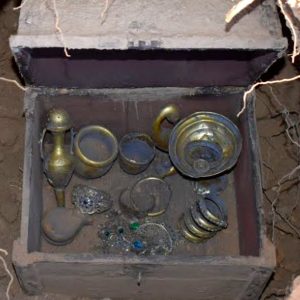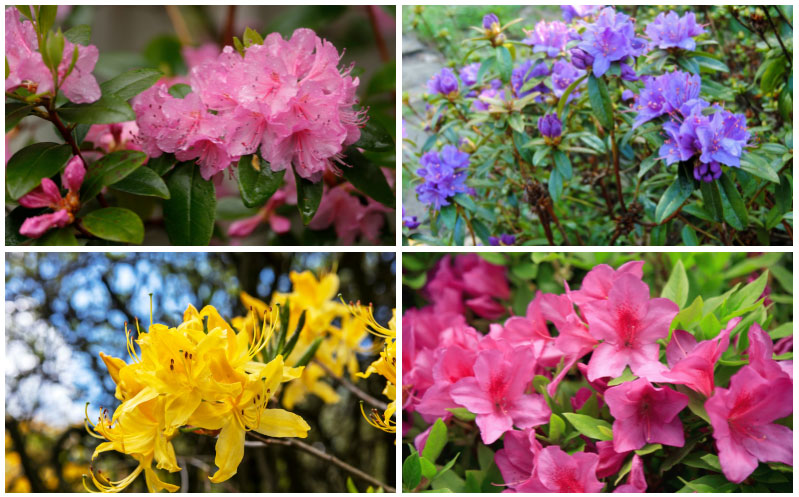
Azaleas grow well in hardiness zones 6 through 10, but some varieties can tolerate lower temperatures in zones 3 and 4 if they’re well-protected.
There are almost 10,000 types of Azaleas and they can grow almost anywhere. In this article, we’ll talk about 10 of the most popular ones.
Azaleas are staples in most gardens because they can survive in various conditions. However, Azaleas are poisonous, so you should be careful while growing them around kids and pets.
1. Autumn Bonfire
The multi-season flowers bloom with single and semi-double glowing red petals that contrast beautifully with the dark green leaves. This repeat bloomer can withstand heat and cold and will bloom in spring, throughout summer and till the end of fall.
The quality and quantity of these repeat bloomers depend on the location and growing conditions. The Autumn Bonfire loves partial shade but can tolerate full sun. The flowers attract butterflies and hummingbirds.
2. Rhododendron ‘Blue Tit’
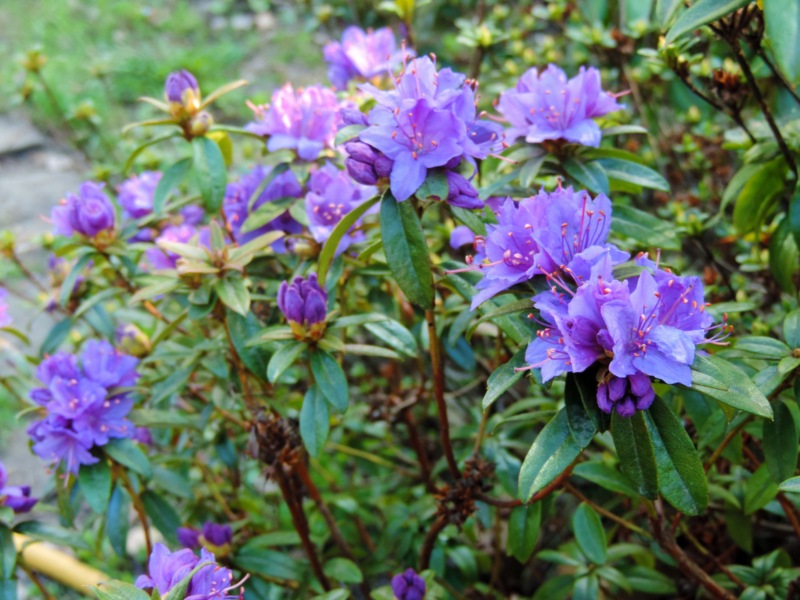
The dense shrub grows eye-catching lavender flower clusters, each holding three to five trumpet-like flowers. The flowers bloom in mid-spring and can be grown in containers.
Blue Tit loves partial shade and grows well in moist and slightly acidic soil. Mulch should be added to retain moisture and keep the soil cool.
3. Daviesii
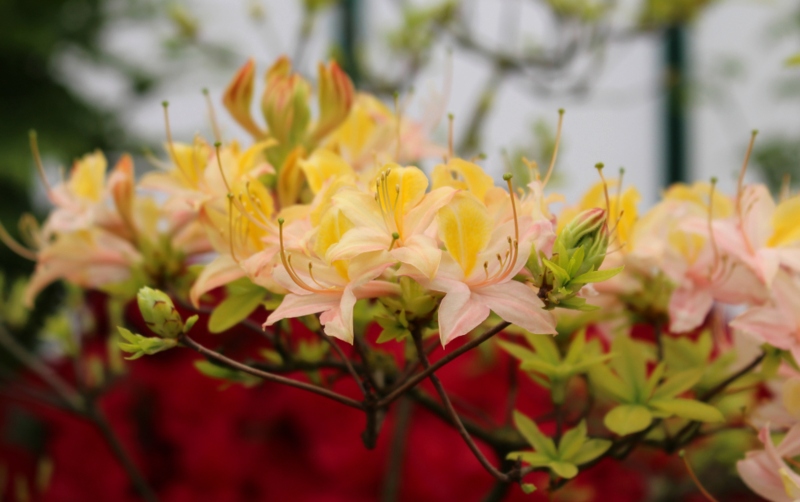
This deciduous Azalea produces a light and pleasant fragrance. The flowers have creamy-white petals with a yellow flare and bloom from late spring to early summer.
Daviesii flowers prefer light shade and protection from frost is needed. They can be grown in gardens, patios, beds, and borders.
4. Else Frye
The Else Frye is rich with a lily-like scent topped with nutmeg overtones. It blooms heavily in mid-spring, growing huge trumpet-shaped frilly-like flowers. The petals are usually white with a rose-pink flare and a gold throat.
Because of the amazing fragrance, these Azaleas are best grown in patios, balconies, and near living areas. The plant can reach a maximum height of 3 to 4 feet.
5. English Roseum
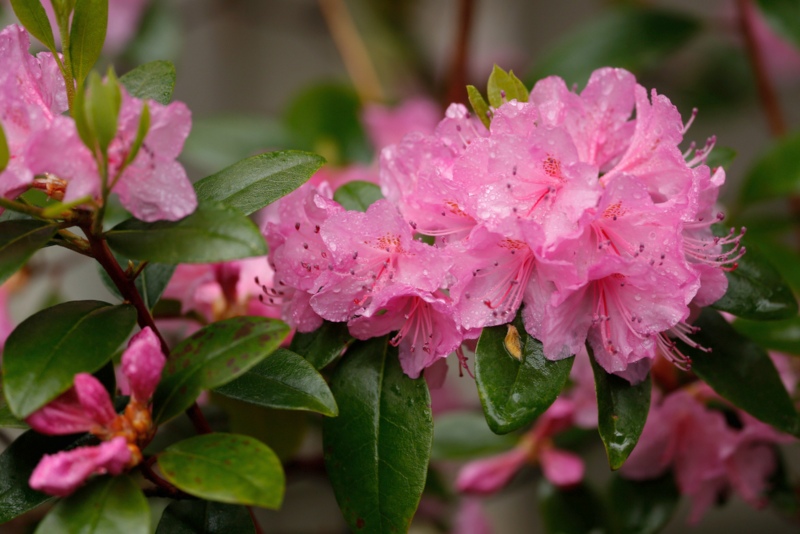
These flowers are more tolerant of the cold so they can grow in zones 4 through 8. The English Roseum grows large dome-shaped clusters of 8 to 10 trumpet-like flowers. The lilac-rose flowers have orange freckles and contrast with the medium green foliage.
This plant is a great filler between trees as it adds color to your garden. The flowers start blooming from late spring to early summer. It usually grows dense, reaching a maximum height of 6 to 8 feet.
6. Fragrant Star
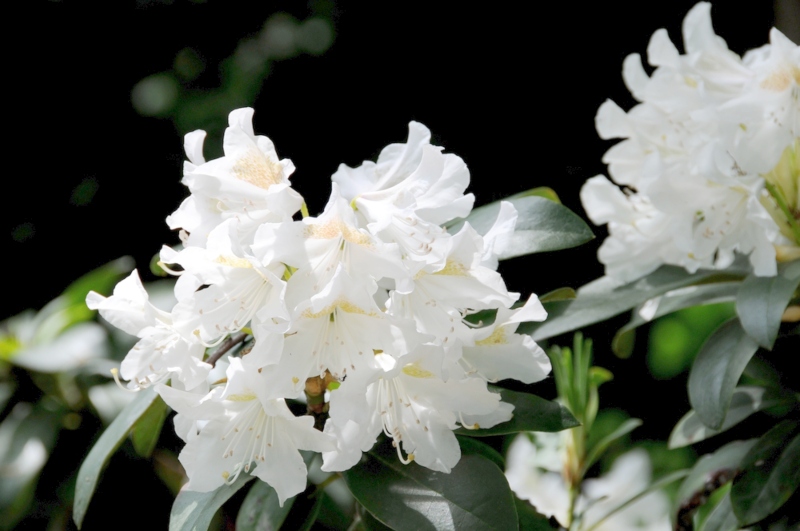
These fragrant deciduous funnel-shaped flowers are perfect for hedges and screens. The pure white color of the flowers creates the needed contrast with the dark-green foliage for a simple yet elegant effect.
The Fragrant Star is cold hardy and can withstand partial shade; however, it prefers full sun. The flowers start blooming in mid-spring, and new growth is encouraged when the spent flowers are removed.
7. Golden Lights
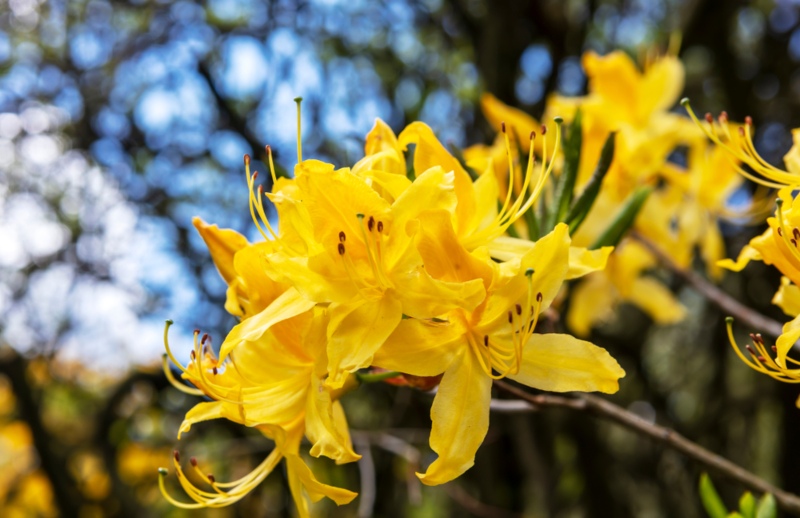
These flowers can withstand the coldness of zone 3 with some protection, growing red-orange buds in late spring and early spring. The flowers are yellow-golden or butter-yellow with salmon-pink hues. The flat trusses carry 10 of these funnel-shaped flowers.
The Golden Lights are very reliable and can grow in containers, beds, borders, hedges, and screens because they tend to be dense. The olive-green leaves are resistant to mildew.
8. Nestucca
The evergreen shrub produces beautiful dome-shaped clusters of white flowers. Each cluster contains around 12 to 15 slightly frilled flowers that open from raspberry pink buds.
The flowers are heat and sun tolerant, but they prefer partial shade. They start to bloom in mid to late spring and are perfect for containers.
9. Percy Wiseman
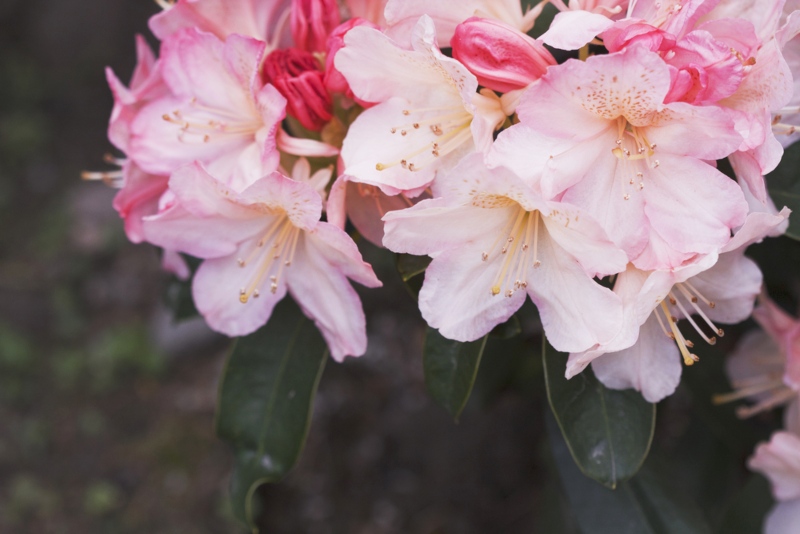
The color-changing flowers make this evergreen shrub quite noticeable. The flowers bloom from mid to late spring displaying ball-shaped trusses, each containing 13 to 15 trumpet-shaped flowers. The flowers are creamy pink when they first bloom, but they pass through shades of red, pink, purplish-pink, and eventually turn creamy white with yellow throats when they fully mature.
Due to their distinctive colors, the flowers are best grown in containers or beds. They also make great bouquet flowers.
10. Royal Azalea
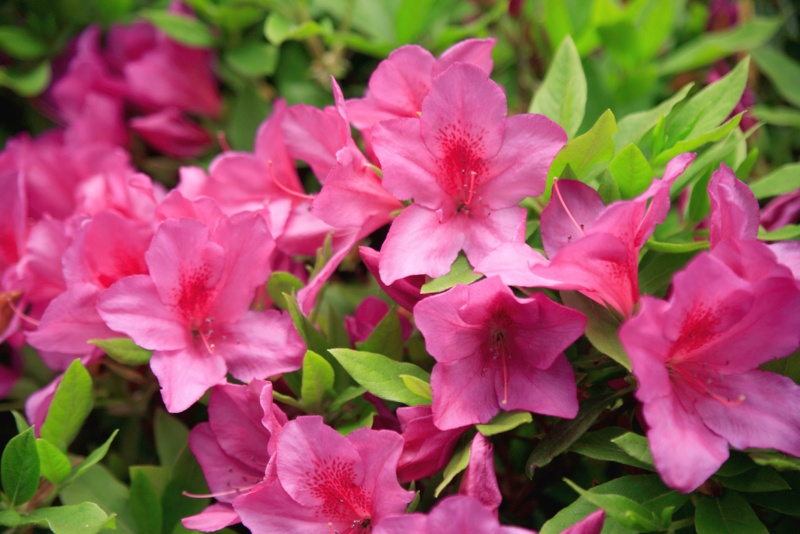
This deciduous Azalea grows clusters of 3 to 6 slightly scented pink flowers. The foliage is pale-green with a pink flush and turns red or orange in fall. Unlike most Azaleas, the Royal Azalea can tolerate more neutral soil.
It can grow up to 4 to 6 feet and is perfect for fountain planting or shade gardens. The Royal Azalea should be grown where it can be protected from strong winds.
Once Azaleas are planted, they’re very easy to take care of. Some pruning might be necessary, although they usually don’t need fertilizers.
